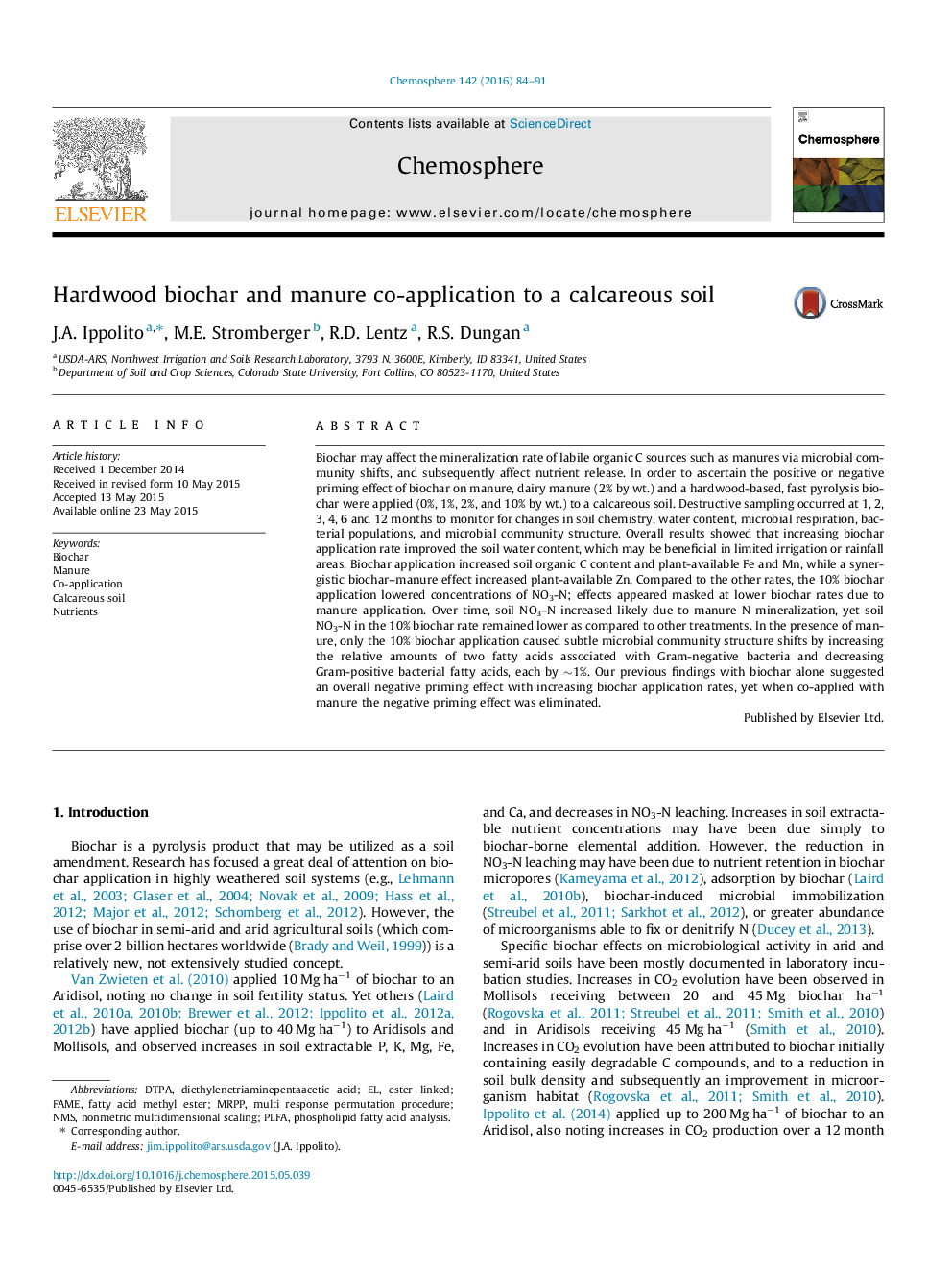| Article ID | Journal | Published Year | Pages | File Type |
|---|---|---|---|---|
| 4408076 | Chemosphere | 2016 | 8 Pages |
Biochar may affect the mineralization rate of labile organic C sources such as manures via microbial community shifts, and subsequently affect nutrient release. In order to ascertain the positive or negative priming effect of biochar on manure, dairy manure (2% by wt.) and a hardwood-based, fast pyrolysis biochar were applied (0%, 1%, 2%, and 10% by wt.) to a calcareous soil. Destructive sampling occurred at 1, 2, 3, 4, 6 and 12 months to monitor for changes in soil chemistry, water content, microbial respiration, bacterial populations, and microbial community structure. Overall results showed that increasing biochar application rate improved the soil water content, which may be beneficial in limited irrigation or rainfall areas. Biochar application increased soil organic C content and plant-available Fe and Mn, while a synergistic biochar–manure effect increased plant-available Zn. Compared to the other rates, the 10% biochar application lowered concentrations of NO3-N; effects appeared masked at lower biochar rates due to manure application. Over time, soil NO3-N increased likely due to manure N mineralization, yet soil NO3-N in the 10% biochar rate remained lower as compared to other treatments. In the presence of manure, only the 10% biochar application caused subtle microbial community structure shifts by increasing the relative amounts of two fatty acids associated with Gram-negative bacteria and decreasing Gram-positive bacterial fatty acids, each by ∼1%. Our previous findings with biochar alone suggested an overall negative priming effect with increasing biochar application rates, yet when co-applied with manure the negative priming effect was eliminated.
